Centipede grass is low maintenance and heat resistance. If you compare the centipede grass with other grasses, it has been proven that it needs less attention.
However, grass requires specific soil and climatic needs. For healthy growth, centipede grass requires direct sunlight. It cannot grow well in the shade. Let us look at the ideal growing condition before learning how to make centipede grass thicker.
Centipede grass grows ideally in soils that are sandy and slightly acidic in nature. A high pH doesn’t suit centipede grass, so it’s crucial to test the soil pH and acidity before you plant it.
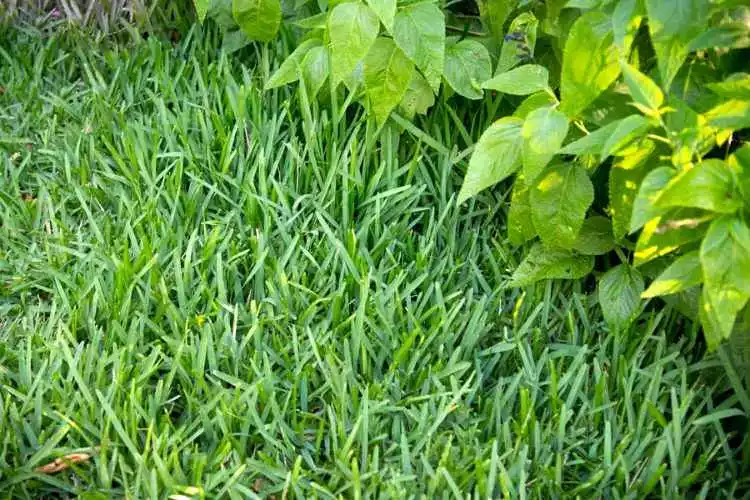
It also requires a hot and humid climate and is unable to withstand extreme cold weather. Rainfall of up to 40 inches is ideal. In drought situations, the centipede may wilt or discolor.
How To Make Centipede Grass Thicker?
Growing centipede grass is natural, but growing it thicker is an art. The following tips will help you grow your centipede grass thicker to have a beautiful and healthy lawn.
1. Preparing The Soil
The first step involves preparing the soil for centipede grass growth. Centipedes thrive in soils with a low pH and a slight acidity, as previously stated.
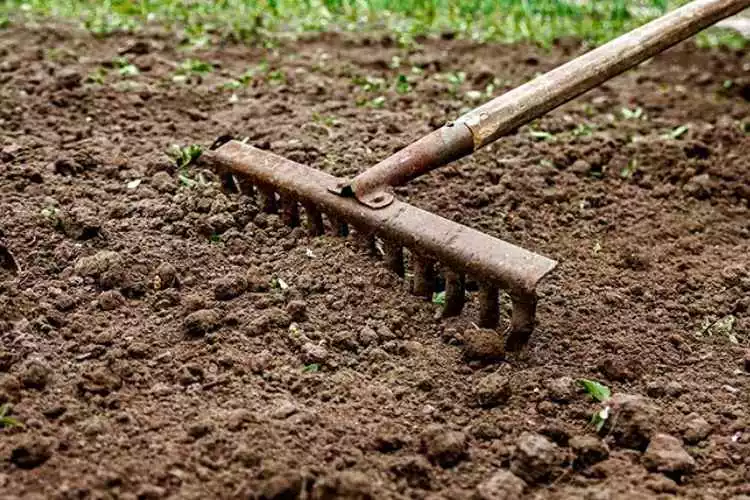
- Importance of soil preparation: Soil preparation is crucial for centipede grass growth. A plant can grow well only if the soil conditions match its development.
- Steps to prepare the soil: Here are the steps to follow for preparing the ideal soil for your centipede grass lawn.
- Remove all unwanted debris, such as dead leaves, stems, roots, and other dirt dropped on the soil.
- Aerate soil with a core aerator. It helps in soil loosening, enabling more space for air to penetrate the soil. In case of no aerator, you can use a rake and scratch the ground to break hard soil clumps thoroughly.
- Lower the pH, or add iron and other supplements based on the soil test.
- Add fertilizer and other nutrients as needed.
- Recommended soil pH for centipede grass: A soil pH of 4.5 is ideal for centipede grass.
- Soil testing and soil amendment options: Soil testing and amendments are crucial for growing any plant. The main aim is to decide whether to add iron and other supplements or lower the soil pH. It helps you evaluate the soil quality regularly and correct it whenever required.
2. Fertilization
Good fertilization promotes the growth of centipede grass.
- Understanding the nutrient needs of centipede grass: As compared to other grasses, centipede grass requires less fertilizer. Excessive fertilizer application may harm the grass, making it susceptible to cold injury.
- Recommendations for fertilizing centipede grass: Experts recommend fertilizing the grass when it takes on a dark green color. Avoid fertilizing when the color of the grass is light or medium green. Fertilizer should be applied at a rate of 1/3 to 1/4 pound per 1,000 square feet.
- Timing of fertilization: Fertilization should be scheduled three times per year. In June, apply nitrogen fertilizer. In August, apply potassium fertilizer.
3. Mowing
Mowing plays a crucial role in the growth of centipede grass. Ensure you mow the grass with a sharp blade; otherwise, you may end up tearing up the grass, which becomes weak and may attract pests and get infected.

- Importance of mowing for promoting thick growth: Mowing promotes the growth of centipede grass and helps keep it healthy and thick.
- Height recommendations for mowing centipede grass: Ensure you maintain the centipede grass height limit of 2 inches. On the other hand, ensure you don’t cut it lower than 1 inch.
During summer, mow the grass to about 1.5 inches high and decrease the height as the season advances. In an instance where the grass is stressed due to hot weather and a water shortage, set the mower height higher than 1.5 inches.
4. Frequency Of Mowing
A well-maintained centipede lawn must be mowed once a week or once every 10 days when the grass is in its growing season. Maintain a mowing height of 1 to 2 inches.
5. Aeration
Aeration is loosening the soil to enable air to permeate it.
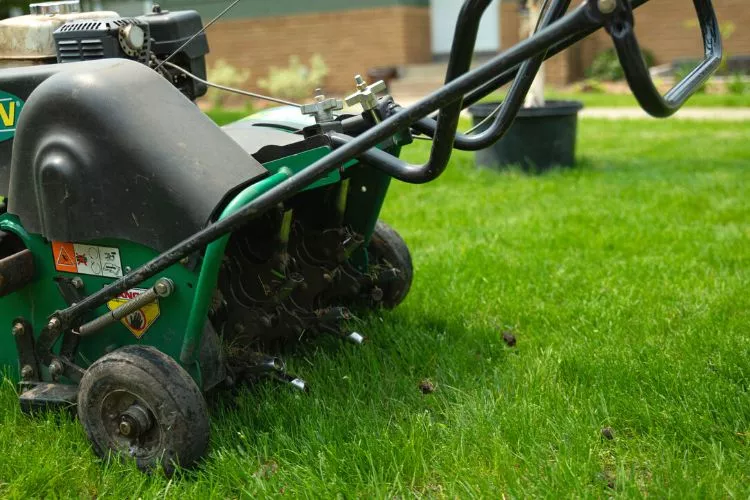
- Why aeration is important for centipede grass: Air, in addition to water and nutrients, is primarily required by the grassroots to help the plant grow thick and strong. A compacted soil blocks these essentials, affecting the plant’s growth adversely. Thus, the need for aeration of the soil. Aeration helps create holes in the soil to promote the supply of air, water, and other nutrients to the grassroots.
- Steps to aerate centipede grass: Here are a few methods to help you figure out how to aerate the soil.
- Spike aerators: Poke the soil to create a hole using a solid spike-like prong. Alternatively, you can also wear spiked aerator footwear and use them in your yard. The spikes make holes in the soil, thus aerating it. The spike-like prong and spiked sandals may help you in aerating the soil in a small proportion. However, spike machines help to aerate the soil on a large scale.
- Slicing aerators: These aerators are equipped with rotating blades. These blades slice through the grass and penetrate into the soil. It helps the air, water, and other nutrients to permeate the soil.
- Core aerators: Most lawn professionals favor these core or plug aerators. The aerators come with rows of hollow prongs. They remove clumps of soil from the lawn and place them on the top after breaking them.
6. Overseed
Overseeding is a great way to thicken your lawn. However, avoid overseeding in the month of winter since centipede grass germinates only in warm weather. Overseeding is a way to grow new grass on existing turf.
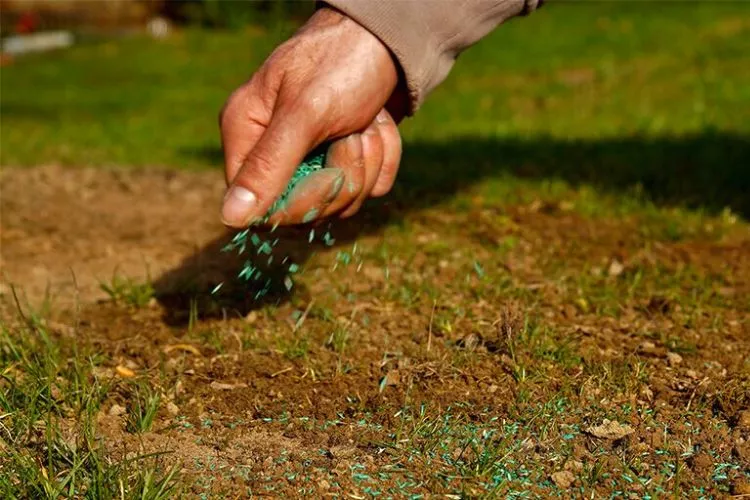
- Why overseeding is important for thick growth: Over time, the centipede lawn may thin out and show signs of decline, displaying spots with no grass or thin grass. In this situation, overseeding is needed to restore these spots with full, thick grass. Otherwise, it would have a very unsightly appearance.
- Steps to overseed centipede grass: Here are the steps for overseeding your centipede grass:
- Get rid of all debris from your lawn: Ensure you get rid of all sticks, straws, and other rubbish.Mow at a lower height: Trim the centipede grass one-inch height. (Save grass clippings. You will need them for the overseeding process later.) Clean the remaining debris from the lawn, if any.
- Aerate the lawn: Aerate the soil as described above using any method.
- Select Centipede grass seed and broadcast spreader: Centipede seeds come in two varieties: Coated and Non-coated. For ideal and evenly applied new grass, use a broadcast spreader.
- Apply centipede grass seed evenly: Using a broadcast spreader, create even-spaced passes on your lawn, and follow a similar pattern for the whole yard.
- Covering centipede grass seed loosely: Cover the freshly dropped seeds with loose soil. The grass will die under a dense layer of soil.
- Applying 10-0-15 fertilizers is ideal for overseeded areas when fertilizing a newly seeded lawn. Use fertilizer sparingly because too much could cause the grass to die. At this point, refrain from using herbicides.
- Watering: Freshly planted seeds require two to three inches of water. Two times per week, water the seeds, making sure to get down a few inches into the soil. Use more water when the weather is hot. Depending on how the seeds are growing, reduce the watering interval to three to four weeks.
- Follow regular maintenance: Reduce the watering schedule to one to two inches per week. Maintain cutting the grass at the suggested height. Maintain a height of at least 2 inches for the first two months. You can apply herbicides, week, and feed after the plant is three months old.
7. Watering
Despite being a low-maintenance grass, you need to water centipede grass regularly and in high volumes. An inch of water at one instance, with a prolonged break between till the next instance, helps the grass grow thicker. On average, once an inch of water after every three days is considered ideal.
These are the simple steps you can follow, if you were wondering how to make centipede grass thicker.
Common Problems With Centipede Grass
One of the common problems of centipede grass is its decline. You may notice spots on centipedegrass not turning green in the spring and later turning brown in the late seasons. The problems may be due to excess fertilizer, droughts, thatching, nutrient deficiencies, incorrect soil, weeds, insects, and pests.
Maintenance Requirements For Centipede Grass
The centipede grass needs less fertilizer, rarely mowing, 6 hours of full sun, and regular watering. High activity or traffic, soil compaction, excess fertilizers, high soil pH, extra thatch, drought, and heavy shade are all unsuitable for centipede grass.
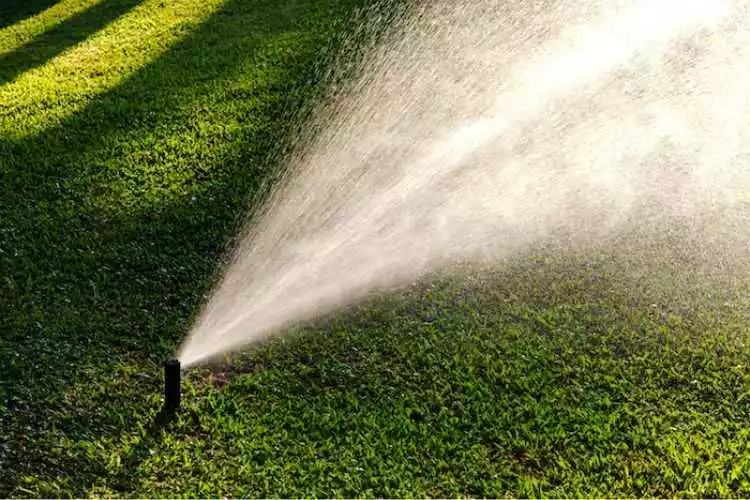
Extra watering is needed during drought situations. Keeping the height of grass up to 1 to 1.5 inches must be followed. In addition, frequent debris cleaning, inspecting the soil quality, and overseeding must be done when and wherever necessary. Using fertilizer and herbicides at instructed times will help the grass to grow thicker.
Other articles related to grass you may find useful: Does Bermuda Grass Have Runners? | Can You Seed Over Dead Sod?
Frequently Asked Questions (FAQs)
Should you water centipede grass every day?
No, once or twice a week of 1 to 1.25 inches of water is enough to maintain an established centipede lawn.
How many times a year should you fertilize centipede grass?
Ideally, you can fertilize centipede grass twice a year. Once during the mid-spring and the second in mid-summer.
What is the best height to cut centipede grass?
1 to 1.5 inches is the best height to cut the grass.
How often should you aerate centipede grass?
For standard soil, you can aerate once a year, that too in the early summer. However, if the soil compaction is too high, consider doing it twice a year.
Should I dethatch my centipede?
Once the thatch layer is more than 1/4 inch, you must dethatch your lawn. Using a dethatcher with 2 or 3 inches blade spacing at a 1/4-inch depth setting will give you the best results. Avoid using a power rake having 1-inch blade spacing, as it may injure the lawn.
Can I overseed centipede grass in the summer or only in the spring?
Centipede grass does not germinate in cold weather. Since spring and summer aren’t cold, you can overseed the grass in these seasons.
Can I make centipede grass thicker once it starts to thin out?
Yes, that is where overseeding comes to your help. Once you notice thin patches on your lawn, consider overseeding.
Conclusion:
Centipede grass grows well in hot weather and requires sandy and slightly acidic soil with lower pH. It requires less water, but on a regular schedule. In my experience, if you live in the ideal weather, you can grow thick centipede grass just doing the basic things right. I hope this guide on how to make centipede grass thicker has been helpful, let me know if you still have any confusion, in the comment box.
